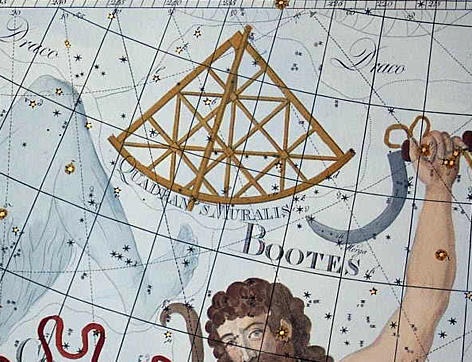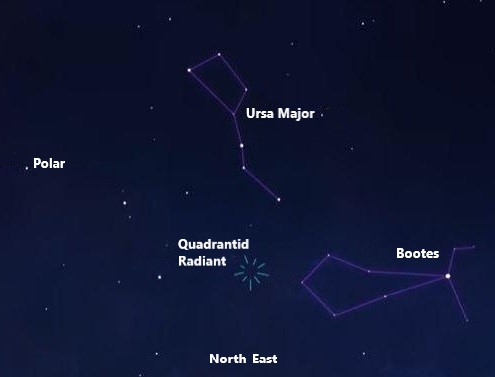As usual, the new meteor year begins with the activation of the Quadrantid meteor shower, the maximum of which falls on January 3 or 4. This meteor shower is quite whimsical — bright meteors rarely meet in it, and its peak lasts only a couple of hours, during which it is sometimes possible to see several hundred “falling stars”, after which they almost disappear. What can we expect from the Quadrantids in 2023?
As a separate meteor swarm, the Quadrantids were discovered at the beginning of the XIX century, but for a long time it was not possible to find its “parent” object. Finally, in 2003, a small near-Earth asteroid 2003 EH1 was discovered, moving in a typically “comet” elongated orbit with a period of 5.5 years. Its orbital parameters are very close to those of the swarm meteors. Most astronomers tend to consider it a “dried up” comet. But scientists still do not have explanations for other features of the meteor shower, so its regular amateur observations have considerable scientific significance.

The radiant of the meteor shower is located in the northern part of the constellation Bootes, which until 1922 some astronomers attributed to the officially unapproved constellation Quadrans Muralis. This year, the almost full Moon, which will hide behind the horizon at the beginning of the morning twilight, will interfere with seeing the Quadrantids. Its glow will “light up” weak meteors and make them invisible. According to the latest forecasts, the maximum meteor shower is expected on January 4 at about 3-4 a.m. world time. So, we will have about half an hour of dark enough sky to try to “catch” it. For observers in the south and east of Ukraine, our natural moon will disappear even earlier, so they will have a certain advantage. Unfortunately, these areas are now the places of active hostilities.

In each case, if there is a clear sky, it is worth trying to watch this interesting shower. Its radiant will rise high enough above the horizon in the morning, and in general its meteors will appear almost all over the celestial sphere. The next time our planet will enter a fairly powerful meteor swarm already in April — it will be Lyrids with a maximum power of about 20 “falling stars” per hour.
Follow us on Twitter to get the most interesting space news in time
https://twitter.com/ust_magazine

